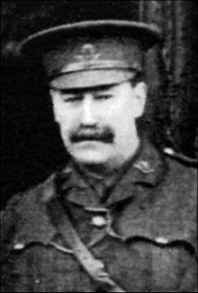7th Battalion Worcestershire Regiment - 1914
The 7th (Territorial) Battalions of the Regiment was at their annual summer camp at Minehead when war was declared in 1914. They returned to Worcester by train early next day and, after four days of busy preparations, the Battalion entrained on the 8th August 1914 for their War Stations. The existing arrangements for the defence of the country included the concentration of the greater part of the Territorial forces in the Eastern Counties to guard against invasion from over the North Sea; and the 7th Worcestershire, then commanded by Lieut.-Colonel J. W. Garratt (succeeded subsequently by Lieut.-Col. A. R. Harman), moved eastwards by stages to join the army which was gathering in Suffolk and Essex to defend the heart of England. The Battalion moved first to Swindon and thence eastwards by way of Stony Stratford and Brentford to Danbury in Essex. After a month at Danbury the Battalion shifted quarters (on 19th September 1914) to Maldon and remained there in billets throughout the winter. During that move eastwards the Territorial soldiers were invited to volunteer for service overseas (actually on August 11th while at Swindon), and nearly all of the Battalion gladly accepted. The spirit of patriotism was running very high; and the Battalion was soon filled to overflowing with eager recruits, mixed with a sprinkling of old hands who had completed their Territorial engagements but who had hastened to rejoin the Colours. |
Colonel E. V. V. Wheeler |
Lieut.-Colonel J. W. Garratt |
Throughout the autumn of 1914 and the long first winter of the First World War, the Territorial and the New Army battalions worked increasingly to complete their training for battle; and in the spring months of 1915 they became ready to take the field. The 1/7th Battalion remained in Essex throughout the winter months, quartered in good billets at Maldon (to which town the Battalion had moved on the 19th September 1914). During that period the Territorial Battalions were reorganized, adopting the four company organization of the Regular Army instead of the old organisation in eight small companies which the Territorial battalions had hitherto retained. Then they were inspected first by General Sir Ian Hamilton, then commanding the Home Defence Army, and later by His Majesty the King.
|


